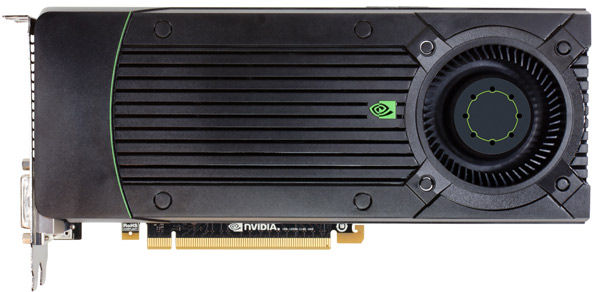NVIDIA GeForce GTX 660 Round-Up: MSI, ZOTAC, GB
Introduction and Specifications
In the past few months, we have taken a look at no less than four new high-end GPUs from NVIDIA based on the company’s Kepler microarchitecture. NVIDIA kicked things off with the GeForce GTX 680 back in May and followed up a few weeks later with the monstrous, dual-GPU powered GeForce GTX 690, which remains the fastest graphics card in existence. A few days after that, the GeForce GTX 670 hit the scene and last month marked the arrival of the GeForce GTX 660 Ti. While all of these GeForce GTX 600 series cards differ in their delivered performance levels, they do have something major in common--they are all based on the same GK104 GPU.
Today, NVIDIA is announcing two more GeForce GTX 600 series graphics cards, but unlike their older brothers, the new GeForce GTX 660 and GeForce GTX 650 are based on two different GPUs, the GK106 and GK107, respectively. The GK106 and GK107 are both based on Kepler, but they are scaled down in comparison to the more powerful GK104. They offer the same feature set (save for Boost technology on the GK107), but have fewer cores, texture units, and ROPs, among other things, and simply perform at a lower performance level as a result. As such, they are also more affordable, as you might expect.
Below are the main features and specifications of the “non-Ti” GK106-based GeForce GTX 660, followed by some more detail on the GPU itself. Take a gander at the high-level stuff and then we’ll move on to the GeForce GTX 650 and all of the performance data you’re probably itching to see…

NVIDIA GeForce GTX 660 Reference Card.
|
| Processing Units | |
| Graphics Processing Clusters | 3 |
| SMXs | 3 |
| CUDA Cores | 960 |
| Texture Units | 80 |
| ROP Units | 24 |
| Clock Speeds | |
| Base Clock | 980 MHz |
| Boost Clock | 1033 MHz |
| Memory Clock (Data Rate) | 6008 MHz |
| L2 Cache Size | 384KB |
| Memory | |
| Total Video Memory | 2048MB |
| Memory Interface | 192-bit |
| Total Memory Bandwidth | 144.2 GB/s |
| Texture Filtering Rate (Bilinear) | 78.4 GigaTexels/sec |
| Physical & Thermal | |
| Fabrication Process | 28 nm |
| Transistor Count | 2.54 Billion |
| Connectors | 2 x Dual-Link DVI, 1 x mini-DP, 1 x HDMI |
| Form Factor | Dual Slot |
| Power Connectors | 1 x 6-pin |
| Recommended Power Supply | 450 watts |
| Thermal Design Power (TDP) | 140 watts |
| Thermal Threshold | 98° C |
Although the GK106 features all of the same technology as NVIDIA’s more powerful Kepler-based graphics processors, this new GPU is somewhat smaller and scaled-down versus its higher-end counterparts.

GK106: GeForce GTX 660 GPU Block Diagram
Posted above is a high-level block diagram of the GK106 GPU powering the GeForce GTX 660. The actual chips are manufactured using TSMC’s 28nm process node and are comprised of approximately 2.54B transistors. The GPU features three Graphics Processing Clusters (GPC) with three SMXs and a total of 960 CUDA cores. There are also 80 texture units and 24 ROPs within the GPU, along with 384K of L2 cache. Memory is linked to the GPU via a 192-bit memory interface. In comparison to the GeForce GTX 660 Ti, the new 660 has a similar memory interface and cache configuration, but the 660 has fewer CUDA cores, texture units, and ROPs, which results in lower compute performance and fillrate, but similar memory bandwidth.
That block diagram sure looks a little funky though, doesn't it? NVIDIA mentioned during our briefing that the 960 CUDA cores exposed on the GK106 are the chip's full complement, but if that's truly the case, one of the GPCs is half the size of the others. Obviously, it's possible NVIDIA designed the chip that way from the start. However, there could also be 192 additional CUDA cores laying dormant on the chip for one reason or another.
More Pics of the NVIDIA GeForce GTX 660 Reference Card.
NVIDIA’s reference specifications call for a base GPU clock of 980MHz on the GeForce GTX 660, with a boost clock of 1033MHz and memory clock of 1502MHz (6008Mhz effective). At those frequencies, GeForce GTX 660 card will offer up to 144.2GB/s of memory bandwidth and 78.4GTexes/s of textured fillrate. Many of NVIDIA’s partners, however, are ready with factory overclocked models (which we’ll show you on the next page), that will offer somewhat higher performance characteristics.
The GeForce GTX 660 has a TDP of 140 watts and requires a single, supplemental 6-pin PCI express power feed. Cards are two-slot wide, but sport a short PCB, like the GeForce GTX 660 Ti and many GeForce GTX 670 cards. The output configuration is the same 2 x Dual-Link DVI, 1 x mini-DP, and 1 x HDMI setup as the GeForce GTX 660 Ti as well.






